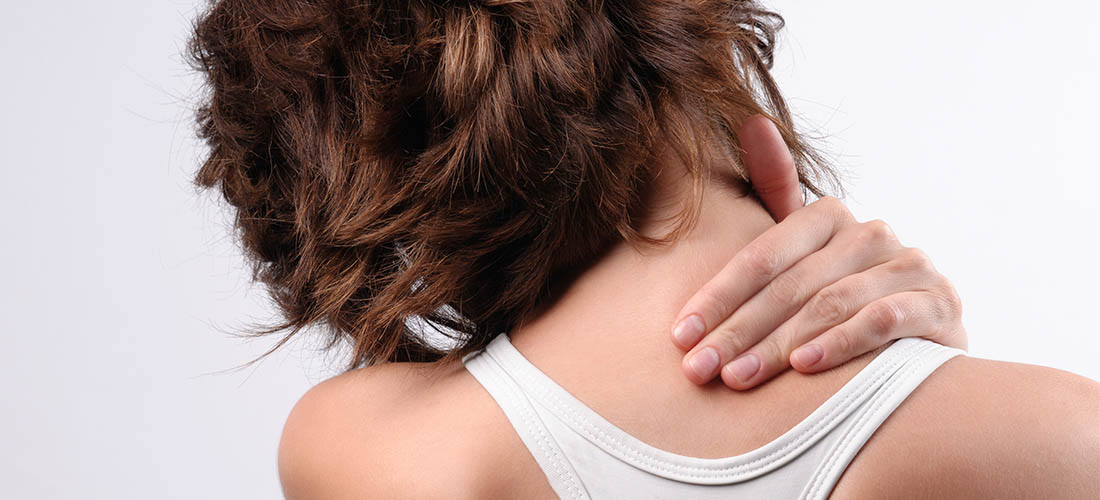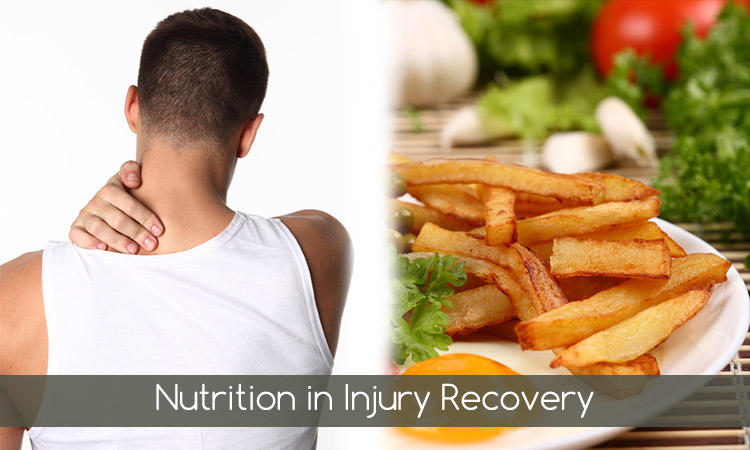Note: Better nutrition would not act like any magic potion in healing your injury. But it will aid your injury recovery procedure. Proper rest, medication, therapy, and nutrition should be clubbed in order to ensure speedy recovery from your injury.
Now that I have put the fact out loud and clear, let’s see how proper nutrition can actually aid your post injury recovery.
Sitting out of the gym nursing an injury can be really frustrating. Going to the gym gets embedded into our routine. For me, sitting out of the gym even on a rest day leaves an itch in my mind. Although I haven’t suffered an injury that has made me sit out, I still sympathize with anyone who has to sit out for days, weeks or sometimes even months out of the gym.
Nutrition plays a crucial role in pulling you back together and taking you back to the gym after an injury. An injury should never be treated as an excuse to wallow in unhealthy food, in fact, it should be treated as an opportunity to consume a healthy diet that not only helps you recover faster from the injury, but also helps you in staying fit after recovery.
Remember one point; you do not have to cut back on your intake when you are injured. In fact, you have to ensure that your intakes matches your body’s requirement and your activity.
Contents
The science of injury recovery
It is pretty simple.
- The first stage after any injury is inflammation. During this stage, the body cuts the nutrition and oxygen supply to the injured area, post which the body removes all the damaged cells.
- After this cleanup process, the oxygen and nutrition supply to the injured area is restored. Scar tissue is then formed to take the place of the damaged cells.
- Scar tissue, once completely aligned, starts degrading into collagen which is much stronger. If you have encountered an injury in the past, you would understand that the new formed tissue is never as strong as it was before the injury. This actually means that post your injury recovery you would have to spend some extra hours at the gym to regain the lost strength.
Where does nutrition come into play?
Proper diet is a commonly ignored ingredient of post injury recovery. Someone without the knowledge of its role in recovery would obviously think that medication, rest and therapy are just sufficient to recover from an injury.
Medication would increase the rate at which scar tissue is formed and would relieve you from pain, rest would give time for the injury to heal, and therapy would align the scar tissues at the right places. Right?
Just hang on! All of us think that we have Dr. House somewhere inside us, but there is not. If you think that nutrition is not important, it is time to hang your doctor coat and listen to what medical experts have to say.
Medical studies show that the injury recovery procedure is characterized by a dramatic increase in the metabolic rate.[1]
In an average human being, the metabolic rate increases anywhere between 15-50%. What does that mean?
It means that your body is burning nutrients faster. The faster they burn, the sooner the nutrient stores of your body would need to be replenished.
Now you would ask that if you are not even working out, where are the nutrients going? The nutrients are going into healing the injury. The body not only requires energy to heal, but also a constant supply of various nutrients, which I will talk about in detail later on.
Proper nutrition is also essential to strengthen the injured area during recovery.
All this means that consuming fewer calories during the recovery period can result in an incomplete healing.
Now, you can obviously increase your calorie intake during that time. But when you are injured, you experience loss of appetite, and hence, less food intake, which is due to a drastic reduction in average daily physical activity.
What happens when you eat less while injured
Many people generally cut down on their food when they are injured. Losing your appetite during an injury is normal, but cutting down is never an option. Most of you would cut down because of two prevailing myths in the health industry. I am just going the burst the bubble around these two myths.
- If we are not working out, our muscle would turn into fat: This is just like saying that water changes into stone when it is kept stagnant. It can never change this way. You have to understand that muscle is MUSCLE and fat is FAT. They are not interlinked and cannot change forms between each other. When you are injured and not working out, your muscles may shrink but they would never change into fat.
- If we are not working out, we gain weight and get fat: NO, this is also not going to happen. You get fat when you are overeating or not practicing a healthy diet. You are not going to get fat if you are taking a healthy high quality meal and are not over eating. TRUE, that your body weight might increase a little when you are not working out, but this only happens when you are underweight, but this is only because your body is trying to catch up, NOT because you are getting fat
To sum up, if you are taking a healthy diet and eating smartly when you are injured, you are never going to get FAT.
Healing faster
All you need is a sound eating pattern and a well-structured diet plan.
YES! It is that simple.
In this case, always remember, quality is better than quantity.
By including a variety of high quality foods, those that provide your body with the right mix of nutrients, you allow your body to recover faster and better. I will list some must haves that should to be a part of your diet and the role they play in recovery.
Again, remember that there is no single food group or nutrient that is going to help, all these constituents work together to boost the recovery.
1. Proteins
Proteins are the the basic building block of our muscles. To rebuild injured muscles, body needs a constant supply of amino acids. There are a number of amino acid supplements available in market, however it is always suggested that you take these through food.
Typically during the healing period, you would have to consume 20-30 grams of proteins per meal. Legumes, nuts, dairy and lean meat are just the right source of protein during this period.
2. Carbohydrates
Just like a car runs on gas, your body runs on carbs. Carbohydrates are the fuel of the body, and are hence, essential to keep the body running. If you are consuming sufficient carbohydrates, your body can use proteins to heal the injury. Low carbohydrate intake means that the protein would be used as fuel, hindering the healing process.
3. Fish and Plant oils
A warning here: Not all plant oils are going to be helpful in healing. Sunflower, cottonseed and soybean oils are a STRICT NO when you are recovering from an injury.
On the other side, olive, canola, flax and nut oils should be a part of your diet. Omega 3 fish oils are always recommended during healing. Oily fishes like tuna and salmon are a great source of Omega 3. In addition, there are also supplements available containing refined Omega 3 oils.
4. Vitamins
Popping a pill is an option, but COME ON. Who doesn’t like a colorful bowl of assorted fruits, fruit smoothies and juices? Fruits and vegetables are a great source of vitamins and these vitamins can knock down inflammation.
5. Herbs and Spices
Turmeric, garlic, green tea and cocoa have anti-inflammatory properties and have to be a part of your diet. To get the right doses of herbs and spices, you would have to take them in pill form.
6. Minerals
Studies suggest that iron and zinc are important components of injury healing.[2][3] The importance of these minerals is increases if you have not been consuming enough prior to the injury.
The right mix of these food groups in the right quantity can do marvels for injury recovery. I have added a sample diet plan towards the end to make things easier for you.
A word of caution!
Changing your diet once you get injured is obvious, but you should also strive towards maintaining a high nutrition diet in your daily schedule. If you are eating smartly and properly every day, your body would less prone to injuries and it would have sufficient stored nutrients in order to help you recover faster even in the case you sustain an injury.
I know I know. Now you would say that you have always been on a diet. You generally take meals twice or thrice a day with no snacks in between. I cut down on my calories all the time. If these things are coming to your mind, I am really sorry to break the myth but this is just not the way to go. In fact, if you go on telling people that you are on a DIET, which in your terms means that you are staying hungry, you are fooling everyone.
Nobody gets healthier by NOT eating.
If you are feeling a hunger pang, I find no reason to shut it out. Instead, you should satisfy your hunger with healthy food, fruits, lean meat, legumes are all good options. This would ensure that your body has sufficient nutrients and energy to keep you HEALTHY. To take this the other way round, you should eat only that much that makes your stomach content, you just cannot stuff your stomach with fruits.
Eat, but do not overeat.
I missed out something important
Your diet during the recovery period has to be divided into 6 small meals. Why?
Because your body needs a steady supply of nutrients and energy during the period.
Stuffing too much at one go would consume a lot of energy in digestion, which is surely something you would not want during this time. Breaking your meals into smaller ones ensures that your body has sufficient time to use the nutrients and it does not have to work hard to digest the food.
The smart, healthy diet plan
In case you are confused about what you should be eating and what not, here is a sample diet plan that would tell you just what you should eat.
| Time | Must Have | Choose Any One | Optional but recommended |
| 7 AM |
|
|
Banana (1-2) |
| 10 AM |
|
|
Apple (1) |
| 1 PM |
|
Add garlic for flavoring |
|
| 4 PM |
|
Add garlic for flavoring |
Glucose (1 glass) |
| 6 PM |
|
Add garlic for flavoring |
Sprouted Legumes (1 bowl) |
| 8 PM |
|
Boiled and Mashed potatoes mixed with curd. |
In addition to this diet plan, you have to avoid:
- Alcohol: You never know when it starts meddling with your prescription medicine
- Sugar: Your body is not fit enough to process sugar
- Junk Food and Fried stuff: Do I need to explain this any further?
What else can help?
Apart from nutrition, there are a lot of things that you can do after an injury in order to speed up the recovery process.
- Put an ice pack on the injured area immediately after the injury. Anything cold would do at this time. Iced water, bag of frozen peas and ice cubes, anything extremely cold would prevent inflammation in the injured area.
- Proper rest is very important for proper recovery. Moving the injured area can result in improper healing. Move the injured area as little as possible and whenever feasible, keep the area elevated above the surface.
- Gorging on pain killers is not going to help in any way; it is only going to make your body dependent on them. Follow the doctor’s prescription strictly. In case you are feeling searing pain which you cannot bear, massage the area with a heat pillow or a warm towel. This will not give you immediate relief, but would reduce the pain.
- Never ignore the importance of physiotherapy in injury recovery. As I mentioned before, therapy is very important in order to ensure that the scar tissue gets aligned properly. A physiotherapist would also suggest you the right exercises that would help restore strength in the injured area.
Some tips to make your diet NOT look like a DIET
Depending on the duration of your recovery period, following a strict diet plan is going to be tough. Here are some tips which would keep your diet healthy and yet give you the freedom to enjoy your meals.
- Grill is your heaven: There is no harm in having a bar-be–que with your friends. Put some marinated chicken, tomatoes, potatoes, peppers, broccoli and mushrooms on a skewer. Use nut, canola or flax oils for cooking and garlic for garnishing. Does this sound like you are on a diet? It is great for a change and it is very healthy
- Casseroles: During your dinner, try having sautéed vegetables instead of a salad, would be great for a change. This would also give you an option to include more vegetables like peas, beans and onions.
- Bring in the variety: Add some vegetables to your 1PM pasta. Different vegetables every day and your pasta would never taste the same.
- Fruit salad for desserts: When eating out, you would crave for a dessert. In fact, you would crave for it even after your evening meals. Just dump the menu and order a fruit salad for dessert. It is healthy and it is sweet.
- Beat the chill with a smoothie: In case it is hot around you, wait before you pick up that can of soft drink. Make yourself a fruit smoothie. Blend some berries or frozen bananas with crushed ice and fruit juice. Beat the chill with a healthy drink.
So, you can have a healthy diet without having to strangle your taste buds.
Always Remember. Nutrition during injury recovery is all about less cheating, more watching and smart eating.
HAPPY HEALING!
Related Post: 23 Tips To Prevent Workout Injuries
References [1] The Metabolic Response to stress: An Overview and Update. Charles Weissman M.D. (pdf). ^Back to Top^ [2] Lansdown AB, Mirastschijski U, Stubbs N, Scanlon E, & Agren MS (2007). Zinc in wound healing: theoretical, experimental, and clinical aspects. Wound repair and regeneration : official publication of the Wound Healing Society [and] the European Tissue Repair Society, 15 (1), 2-16 PMID: 17244314. ^Back to Top^ [3] Rothman RH, Klemek JS, & Toton JJ (1971). The effect of iron deficiency anemia on fracture healing. Clinical orthopaedics and related research, 77, 276-83 PMID: 5140454. ^Back to Top^
Last Updated: Jun 11, 2014
Next Scheduled Update: Aug 11, 2014







Comments are off this post!